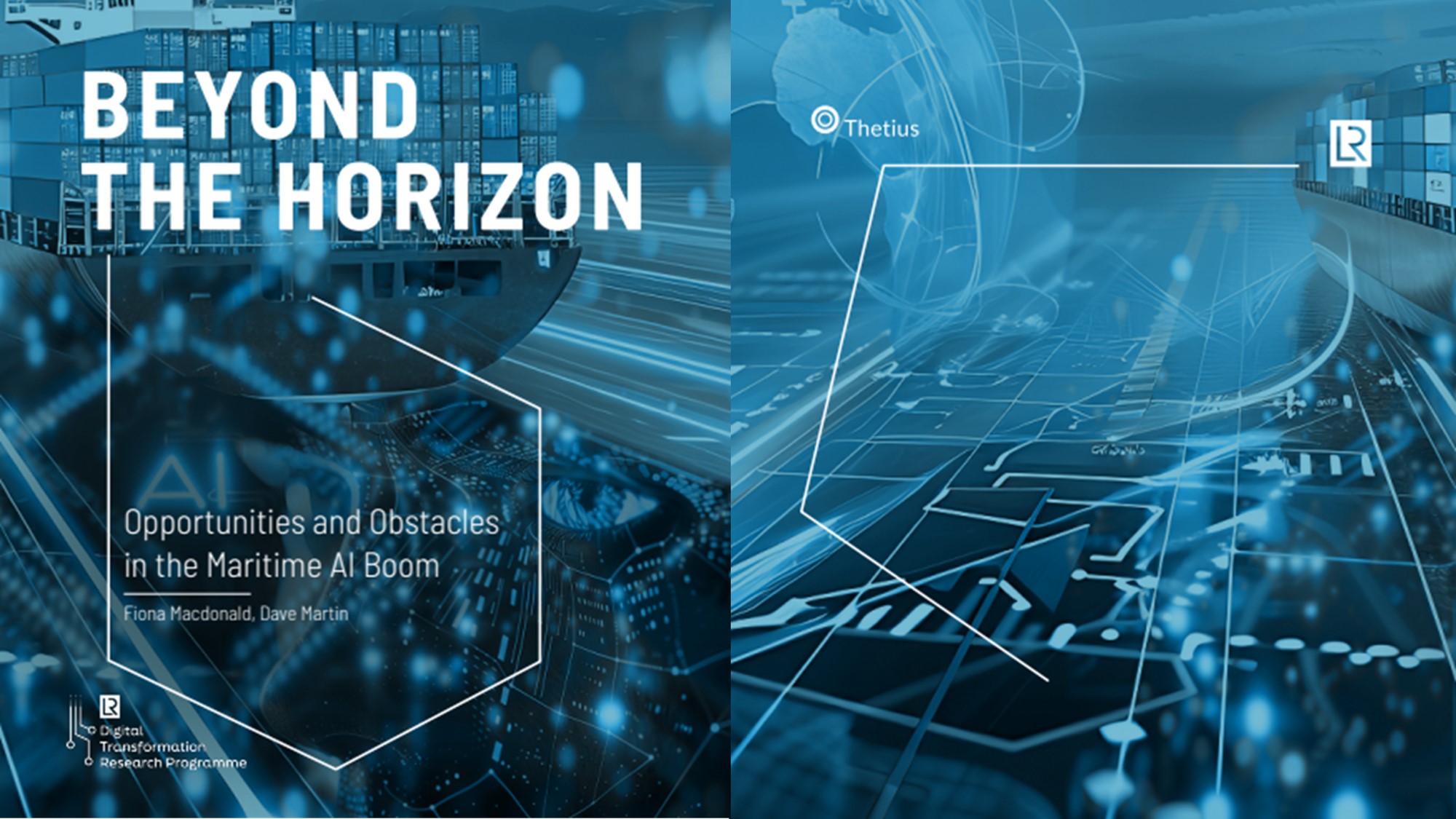It is evident that Artificial Intelligence (AI) has rapidly expanded within the maritime industry, being regarded as a revolutionary force that brings significant improvements to operational efficiency, safety, and sustainability.
This article, commissioned by Lloyd’s Register and prepared by Thetius, explores how the maritime-port sector, traditionally resistant to change, is adopting AI in key applications such as route optimization, predictive maintenance, and autonomous navigation. However, along with these opportunities, it acknowledges the inherent challenges: data quality, the availability of real-time information, regulatory uncertainties, and user trust in AI systems.
Furthermore, it emphasizes the need to implement assurance processes to ensure safety and ethics in AI use, offering strategic recommendations for effective implementation. All of this advocates for a gradual and strategic adoption of AI, fostering collaboration among stakeholders to develop AI solutions that are scalable, flexible, and integrated with human expertise. Additionally, it calls for a transparent approach in its deployment, thereby fostering trust and promoting a culture of innovation to navigate the future of the sector.
“It is important to recognize that AI is a set of tools, not a single tool in a toolbox. AI should not be deployed in isolation; it must be combined with other technologies to create maximum value.”
The main inputs and contributions are:
- The AI maritime market has experienced rapid expansion, tripling in size to reach $4.13 billion, with a projected annual growth rate of 23% over the next five years.
- Thetius IQ17 has identified 125 companies involved in supplying AI technologies over the past 12 months and 36 shipping companies that have announced or plan to implement AI-based technologies. Of these, 63.2% are SMEs, 18.4% are large companies, 16.8% are startups, and 1.6% are scale-ups.
- Over the past 12 months, key applications in the sector have focused on voyage optimization, data-driven maintenance, autonomous navigation, safety and compliance, energy management, and port management.
- Some examples of using large language models (LLMs) to optimize operations include the shipping company K Line, which uses ChatGPT to streamline employee operations and promote the use of new technologies. Another example is Maersk, which uses AI in its UK warehouse to triple sorting speed and increase inventory speed by 33%.
- Real-time operational data analysis has helped companies like Marubeni, a Japanese shipping company, save substantial amounts on fuel costs, with savings of up to $86,000 on a single ship in just one year.
- The report highlights concerns over data privacy and the ethical challenges of AI, insisting that transparency and user trust are vital for the successful deployment of AI technologies.
- Assurance frameworks, such as those developed by Lloyd’s Register, are crucial to verifying that AI systems in maritime transport are safe, reliable, and comply with industry standards and regulations.
- User trust and transparency are essential for the successful adoption of AI, and treating AI as a stakeholder fosters better collaboration and understanding between human operators and AI systems.
- AI solutions should include measures to help users clearly identify the benefits of their implementation. Often, the advantages of deploying a specific solution are not immediately apparent. Tracking these benefits highlights progress and helps assess how and when previous losses occurred in the absence of AI.
“Successfully integrating AI into maritime operations requires not only cutting-edge technology but also a strategic approach that includes processes and verification to help ensure the reliability and ethical use of AI systems.”




Leave a Reply